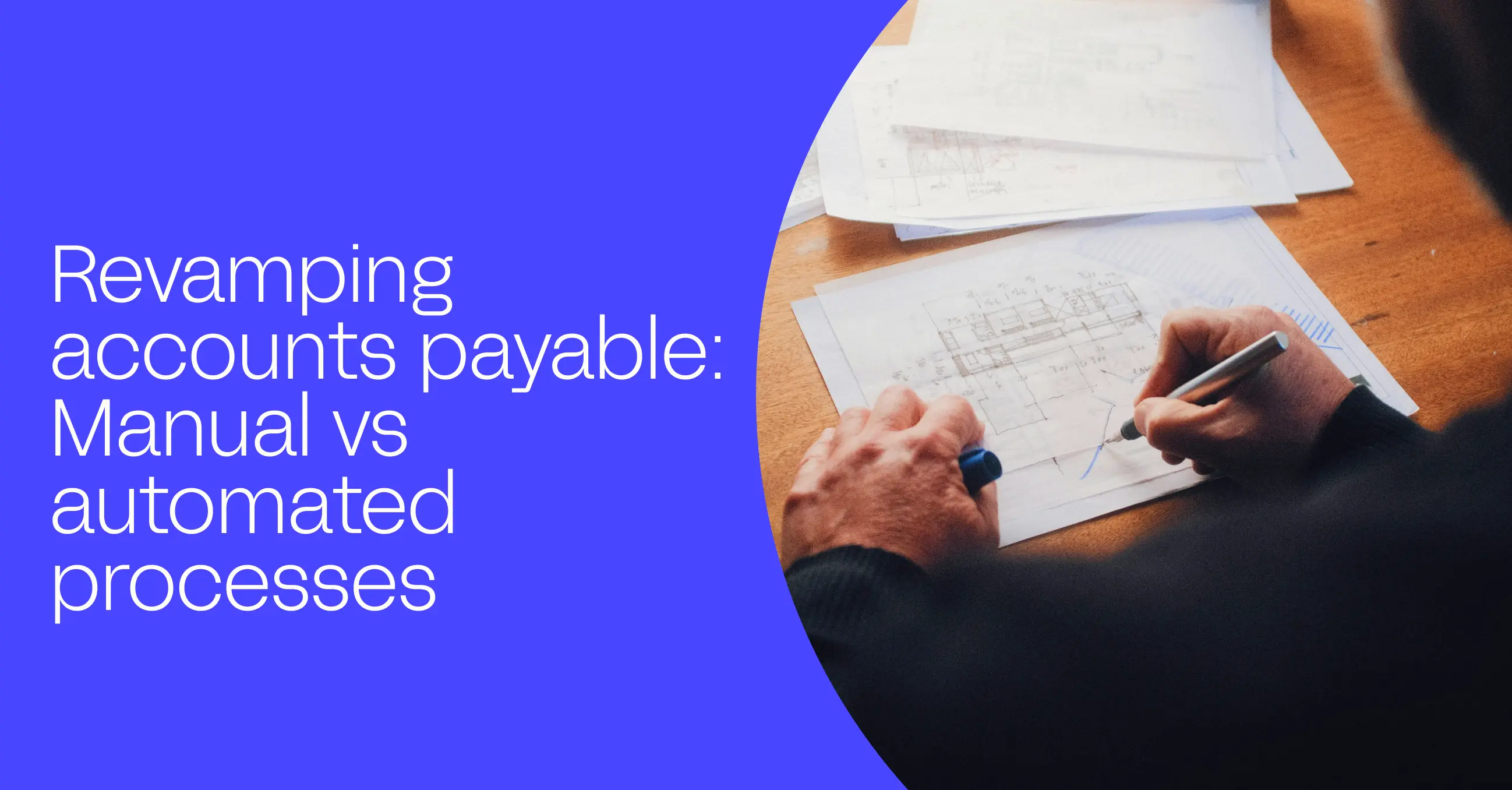The encumbrance accounting process
Jo McCann
| July 7th, 2021
Encumbrance accounting helps your company with budget visibility and analysis by recording planned future payments. Rather than just looking at current transactions, this type of accounting encourages tracking upcoming expenses to help show a more detailed view of your cash flow.
When tracking your transactions and expenses, it is crucial to reflect your cash flow on your general ledger accurately. Accurate financial reporting in both accounts payable (AP) and accounts receivable (AR) helps the company accurately reserve funds for items like tax payments, payroll, real estate acquisitions, and other miscellaneous projects and invoices. Vital analysis, reports, and audits are based on the cash outflow and journal entries tracked by accounting, making accurate tracking much more than a simple general planning tool.
With how essential an accurate fund balance is, there are many ways accounting teams have tried to track this data. One type of accounting that hopes to anticipate future budgets better and provide budgetary control options is encumbrance accounting. From the setup of a more precise budget amount to avoiding red spending flags, encumbrance accounting can help your company have more accurate and helpful general book sets.
What is encumbrance accounting?
Encumbrance journal entries and accounting are also sometimes called commitment accounting. This naming makes more sense when you realize that encumbrance enables budgetary control by recording money that is allocated for future projects, preventing over-expenditure of a budget.
Manual encumbrance lines are made on the general ledger, most commonly after a purchase requisition process. Once a purchase order (PO) goes through the approval process, the encumbrance transaction then shows the money appropriations for that purchase. Any unpaid encumbrances at the end of the year processing, such as outstanding purchase orders, are examined and may carry to the first period of the following year.
What is an encumbrance?
An encumbrance, also called a pre-expenditure, is a method of tracking future period payments prior to the finalization of the project or the receipt of goods. Think of encumbrances as reserved funds to later pay pre-determined liabilities that will occur later. There are different encumbrance types, ranging from reserves for payroll to money set aside by budgetary control groups for things like contingency expenses.
The accounting term encumbrance can sometimes be mistaken for real estate encumbrance. When a real estate property has a lien or easement, it is considered encumbered. The real estate term has nothing to do with encumbrance entries in accounting.
What is an example of an encumbrance?
One of the most common examples of an encumbrance is the money allotted when you create a purchase order for services or items from a vendor. When you make the PO, you then will generate an entry indicating the encumbrance or the money you will pay in the future for that order. Once you pay that supplier's invoice, you will remove that money from within the encumbrance balance.
Other examples of encumbrance can include money set aside for payroll, allotted cash for monthly fees such as utilities or rent, and cash that is set aside for taxes or other longer-term fees. It is up to your company to decide which items will be the most helpful for them to track to more accurately predict and track cash flow.
Is encumbrance a debit or credit?
Encumbrance is considered a debit balance account. When you need to allot money for a future payment, such as when a purchase order is approved, the encumbrance account is debited. In the future, when you pay that sum off, the encumbrance account is credited.
Explaining the encumbrance accounting process
Encumbrance accounting, when properly implemented, allows for financial information to be seen and analyzed much quicker than a "budget to actual" accounting process.
Step 1: Pre-encumbrance
During the initial pre-encumbrance phase, someone submits a request to reserve money for a future payment. This money during this phase has been requested, but not yet approved for the purchase. Accounting sometimes will track these requests in the general ledger. Then, when that request is approved, a purchase order can easily be made for the exact amounts. When the encumbrance amount gets added to the general ledger, you can remove the payment from the pre-encumbrance amount. This phase often begins when a purchase requisition is put in for approval.
Step 2: Encumbrance
Once both the purchase requisition and the vendor approve the pricing and order details, the pre-encumbrance phase evolves into the encumbrance phase. Now finalized numbers are in place, and there is a legal obligation to make the payment. This phase is recorded in the general ledger when using encumbrance accounting, even if you did not use the pre-encumbrance stage.
Step 3: Expenditure
Within the expenditure phase, the order has been fulfilled. Your company has received the goods or services that were initially ordered and now must pay back the vendor's invoice. Money from the encumbrance account is moved into the appropriate account to pay the invoice, and accounts payable handles the vendor payment.
Why is encumbrance accounting needed?
Encumbrance accounting has many benefits for a company, including better visibility, improved expenditure control, and more precise analysis. This type of accounting also helps detect fraud, prevent rampant spending, and increases budget control.
Increased visibility
By carefully and accurately tracking your encumbrance amounts, you also increase spending visibility. It reduces unnecessary spending when tracked this way and can help catch any fraudulent purchases more quickly. Overall, it can assist in making purchasing information more transparent and easily accessible when needed to enable tracking and overspending prevention.
Accurate expenditure control
Encumbrance data enables budgetary control, letting your company better understand where they are financially at any given time. Since the money that the company will spend later is tracked, a company can keep from overspending. By making visible the amount of money you plan on spending in the future, you can more accurately see how much money you can spend on future projects or purchases without going over budget.
While there are other ways to check this amount, such as checking your actual expenses against your approved purchase orders or other factors, it is often less accessible and takes more work to see the exact number. In encumbrance accounting, that number is upfront and easy for any budgeting committee or CFO to examine.
Enhanced analysis
When you record encumbrance within your ledger, it makes budget data much more accessible. By tracking this information, financial analysis is easier to perform and a more accurate predictor. When your analysis is more precise, your estimated cash outflow will reflect your company's position more truly.
Conclusion
Looking for other ways to increase your accounting's accuracy and analytics? Consider investing in automation tools like Routable. Our platform helps you simplify your AP and AR processes, eliminating manual errors and allowing for better tracking of your payments and vendors. Routable provides a complete audit trail to help lower fraud and compliance risk and helps increase visibility through this thorough tracking. We also allow you to process your invoices and payments your way, whether that means email, scanning, or automatically forwarding bills from your email. Routable wants to enable you to grow into the future, which is why we have a sophisticated API for any bulk processing.
Are you interested in finding out more about how automation can empower your team and increase your visibility and expenditure control? Request a demo.
Recommended Reading

Accounting
What is payment automation?
From fraud detection to reducing manual data entry, automation can help your team be more efficient and focus on much more crucial tasks than filing papers.

Accounting
Revamping accounts payable: Manual vs. automated processes
Learn how transitioning from manual to automated processes can revolutionize your Accounts Payable department while avoiding potential pitfalls.
